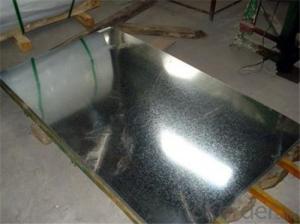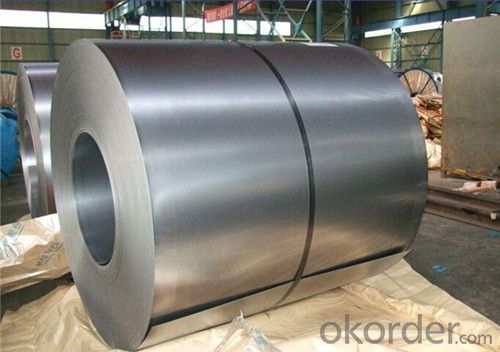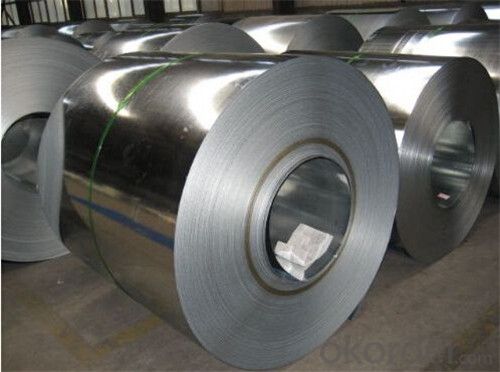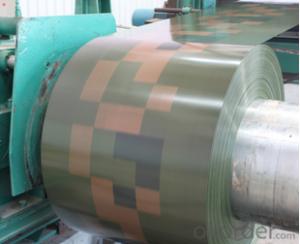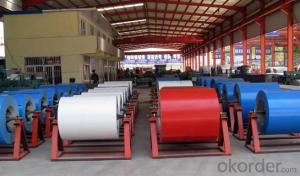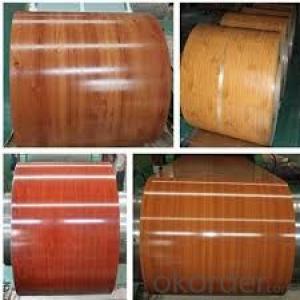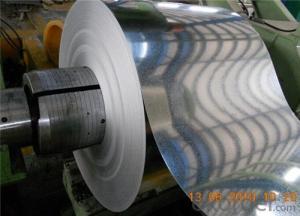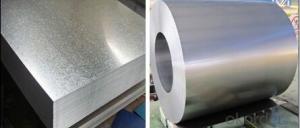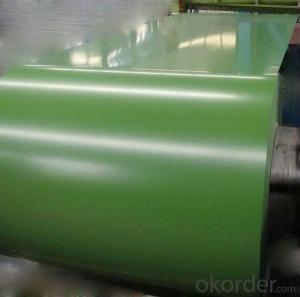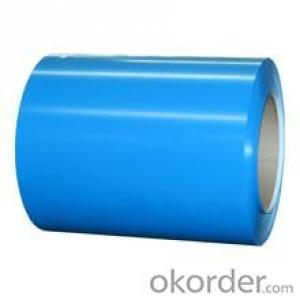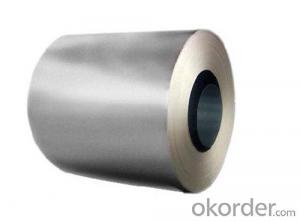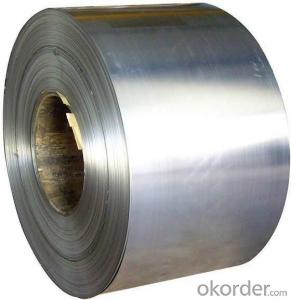galvanized rolled steel coils for construction
- Loading Port:
- Shanghai
- Payment Terms:
- TT OR LC
- Min Order Qty:
- 36 m.t.
- Supply Capability:
- 30000 m.t./month
OKorder Service Pledge
OKorder Financial Service
You Might Also Like
Specifications
1,hight-quality products
2,competitive price
3,perfect post-sale service
Product Name | Hot Dipped Galvanized Steel Coil |
Certification | ISO9001:2008 |
Standard | JIS 3302 / ASTM A653 / EN10143 |
Grade | DX51D,SGCC,ect |
Zinc Coating | galvanized(GI) |
Zinc thickness | 40-275g/m2 |
Thickness | 0.12mm~1.2mm |
Width | 600mm-1250mm |
Coil ID | 508mm/610mm |
Coil weight | 3-8 MT |
Technique | Hot rolled/cold rolled/galvanized |
Surface structure | Mini/regular/big/zero spangle, Chromate treatment/chromate-free treatment/untreated unoiled/oiled |
Special Application | Wear resistant steel, high- strength steel plate |
Advanced | Advanced production technology Excellent r&d management team Sophisticated production equipment Constant pursuit of high-quality goods First-class after-sales service |
FAQ
Payment
30% deposit, 70% by T/T against B/L copy; or by L/C at sight
Guarantee against colour fading.
These products can be customized according to your requirement, including zinc coating,
printing color, roll width, etc.
1. Minimum Order Quantity?
MOQ is 25 tons, your quantity is ok, sample is available.
2. What kind of terms of payment?
T/T, L/C,are available.
- Q: What are the different methods of tension leveling for steel coils?
- There are various techniques available for tension leveling steel coils, each with its own benefits and applications. 1. Roller leveling: By passing the steel coil through a series of rollers under high tension, strategically positioned to exert pressure on the coil, this method effectively stretches and elongates the coil. It is commonly used for thinner gauge coils and effectively eliminates defects such as coil set, crossbow, and edge wave. 2. Stretch leveling: This technique involves subjecting the steel coil to a combination of tension and elongation. The coil is held by clamps at both ends and then stretched using hydraulic or mechanical devices. This process helps remove residual stresses, flatten the coil, and enhance shape control. Stretch leveling is particularly suitable for thicker gauge coils, effectively eliminating wavy edges and center buckle. 3. Temper rolling: By passing the steel coil through a series of temper rolls that apply pressure on the surface, this method is primarily used to improve the surface finish and enhance the mechanical properties of the steel. It also helps reduce coil set and improve flatness. 4. Skin pass rolling: After the primary leveling process, the steel coil is passed through a series of rolls that apply light pressure on the surface. This technique is typically performed to further improve surface finish, enhance flatness, and reduce surface defects such as scratches or marks. 5. Stretcher leveling: This technique involves clamping the steel coil at both ends and applying tension to stretch it. The stretched coil is then held in this position for a specific duration to allow for stress relief and shape correction. It is commonly used for thicker gauge coils and effectively removes defects like coil set, crossbow, and center buckle. Each tension leveling method offers distinct advantages and is suitable for different types of steel coils and specific requirements. The choice of method depends on factors such as coil thickness, desired flatness, surface finish, and the specific defects that need to be corrected.
- Q: What are the typical lead times for ordering steel coils?
- The typical lead times for ordering steel coils can vary depending on various factors such as the type and size of the coil, the supplier's production capacity, and the current market conditions. However, on average, lead times for ordering steel coils can range from a few weeks to several months. For standard-sized steel coils that are readily available in the market, lead times are generally shorter and can range from a few weeks to a couple of months. This is because suppliers often maintain a stock of these commonly used coil sizes to meet immediate customer demands. However, it's important to note that lead times can still be influenced by factors like transportation and logistics. On the other hand, if you require custom-made or non-standard steel coils, lead times can be longer. These coils usually involve additional processes such as specialized cutting, shaping, or coating, which may require more time for production. Lead times for custom-made steel coils can range from a few months to even six months or more, depending on the complexity of the specifications and the supplier's production capabilities. It's worth mentioning that lead times can also be affected by external factors like market demand and availability of raw materials. During periods of high demand or when there are supply chain disruptions, lead times may be extended as suppliers need to adjust their production schedules accordingly. To accurately determine the lead times for ordering steel coils, it is recommended to reach out to specific suppliers or manufacturers. They will be able to provide you with the most up-to-date and accurate information based on your specific requirements and the current market conditions.
- Q: How are steel coils stored?
- Steel coils are typically stored in warehouses or outdoor yards. They are usually stacked on top of each other in a crisscross pattern to ensure stability. To protect them from moisture and corrosion, they are often wrapped in a waterproof cover or stored on pallets. Additionally, some coils may be stored in specially designed racks to prevent damage and allow for easy access.
- Q: Can steel coils be coated with scratch-resistant materials?
- Yes, steel coils can be coated with scratch-resistant materials. These coatings are typically applied to the surface of the steel coils to enhance their durability and protect them from scratches and abrasions.
- Q: How are steel coils inspected for yield strength using tensile testing?
- Steel coils are inspected for yield strength using tensile testing by taking a sample from the coil and subjecting it to a controlled force until it reaches its yield point. The force required to cause permanent deformation in the sample is measured, and this value represents the yield strength of the steel coil.
- Q: How are steel coils used in the production of medical equipment?
- Steel coils are used in the production of medical equipment in a variety of ways. One common use is in the manufacturing of surgical instruments. Many surgical instruments, such as scalpels, forceps, and clamps, require a sharp and durable cutting edge. Steel coils are used to create these cutting edges, as they can be easily shaped, hardened, and sharpened to ensure precision and longevity. Additionally, steel coils are often used in the production of medical devices such as braces, orthopedic implants, and prosthetics. These devices require materials with high strength and durability to support and stabilize the body. Steel coils can be formed into different shapes and sizes to meet the specific needs of patients, providing the necessary support and functionality. Furthermore, steel coils are used in the production of medical equipment such as MRI machines and X-ray systems. These machines require strong and reliable components to ensure accurate imaging and diagnostics. Steel coils are used in the construction of these machines to provide stability and structural support, allowing for precise and high-quality imaging. In summary, steel coils play a crucial role in the production of medical equipment by providing strength, durability, and versatility. From surgical instruments to orthopedic devices and diagnostic machines, steel coils are utilized to create reliable and high-performing medical equipment that ultimately improves patient care and outcomes.
- Q: What are the different methods of forming steel coils?
- There are several methods of forming steel coils, including hot rolling, cold rolling, and continuous casting. Hot rolling involves heating the steel above its recrystallization temperature and passing it through a series of rollers to shape it into coils. Cold rolling, on the other hand, involves reducing the thickness of the steel by passing it through rollers at room temperature. Continuous casting is a process where molten steel is poured into a mold and then cooled and solidified into coils. These different methods offer varying levels of strength, durability, and surface finish in the resulting steel coils.
- Q: How do steel coils perform in high-pressure applications?
- Due to their robust and durable nature, steel coils are highly effective in high-pressure scenarios. The exceptional tensile strength of steel enables it to endure immense pressure without any distortion or breakdown. Moreover, steel coils are specifically engineered to retain their shape and structural integrity even under the most extreme pressure, making them ideal for deployment in a wide range of high-pressure applications such as hydraulic systems, pressure vessels, and industrial machinery. Furthermore, the exceptional resistance of steel coils to corrosion and high temperatures further augments their performance in high-pressure environments. These qualities, coupled with their reliability and capacity to withstand high pressure, render steel coils the preferred choice for industries seeking resilient and efficient equipment.
- Q: How are steel coils tested for compliance with industry standards?
- Steel coils are tested for compliance with industry standards through various methods. These include visual inspection, dimensional measurements, and mechanical tests such as tensile and impact tests. Additionally, chemical composition analysis is performed to ensure that the steel meets the required specifications. These comprehensive tests ensure that the steel coils are of high quality and meet the standards set by the industry.
- Q: Why is it usually scorned by the shooting community to use steel cased ammo (like Wolf)? Always hear corrosive and steel is bad for the extractor/firing pin. Hulp a simpleton out!
- if you were going to shoot thousands upon thousands of steel cases in your rifle, it would cause more wear than brass cases do. but for the casual shooter, it won't be a significant factor. Corrosive ammo is another story (but not all steel cased ammo is corrosive, and any made after 1975 is not corrosive). shooting corrosive ammo in a bolt gun is simple to care for. When finished shooting, simply clean out the barrel, chamber and bolt face etc with hot soapy water, or military bore cleaner. This nuetralizes the corrosive chemicals. then dry it well, and then do your normal clean and lube with break free CLP or whatever other lube you prefer. But for a semi auto, gas operated firearm, the cleaning process takes hours, with having to tear it down and clean every part including gas tube etc. As for the ectractor, same answer as above, since an extractor slides in front of the rim as the cartridge is fed, it really does not add much more wear if it is steel. The firing pin does not contact the steel case, only the primer, so no additional wear there. The biggest problem with wolf ammo is encountered when you fire a lot of rounds quickly, building up a lot of heat, which can cause the lacquer sealent on the case to turn gummy and this in turn will cause problems for the firearm. Answer? first, use wolf ammo for casual shooting and clean the firearm extensively afterwords. Save your better ammo for real life situations. I understand that some of the newer wolf ammo does not use the same lacquer sealant. I believe it is called silver bear, but don't quote me becasue I can't swear that that is it. shoot safe
Send your message to us
galvanized rolled steel coils for construction
- Loading Port:
- Shanghai
- Payment Terms:
- TT OR LC
- Min Order Qty:
- 36 m.t.
- Supply Capability:
- 30000 m.t./month
OKorder Service Pledge
OKorder Financial Service
Similar products
Hot products
Hot Searches
Related keywords
